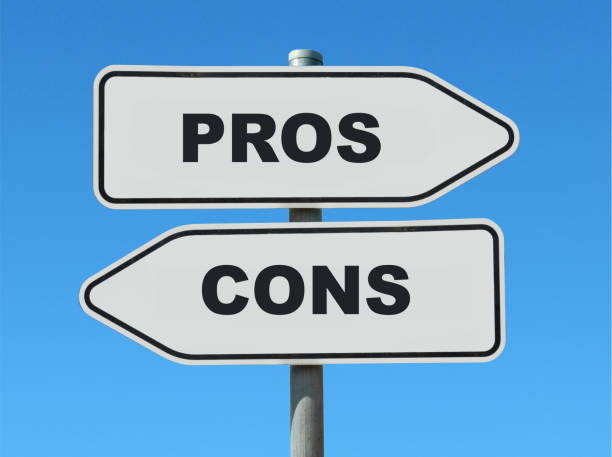In life, making decisions often involves careful consideration of both the positive and negative aspects of a situation. Whether you’re deciding which car to buy, what career path to take, or even if you should eat out for dinner, weighing the pros and cons is a simple yet effective method of decision-making. But what exactly do we mean by “pros and cons,” and how do they differ? This article delves into the meaning of pros and cons, explains the differences, and explores how to use this approach in everyday life.
What Are Pros and Cons?
The terms “pros and cons” represent the positive and negative aspects of any decision, choice, or option. Derived from the Latin phrase “pro et contra” (meaning “for and against”), this method allows people to analyze the advantages (pros) and disadvantages (cons) of a given situation.
Here’s a closer look at each:
Pros:
Definition: Pros refer to the benefits or positive aspects of a particular option. These are the reasons in favor of making a certain decision.
- Examples:
- When buying a new smartphone, pros may include better camera quality, faster performance, and enhanced features.
- When considering a job offer, pros could include a higher salary, opportunities for growth, or a shorter commute.
Cons:
- Definition: Cons are the drawbacks or negative aspects of a situation. These are the reasons against making a particular choice.
- Examples:
- The cons of buying a new smartphone might be the high price, lack of a headphone jack, or limited color options.
- In a job offer scenario, cons could include longer working hours, limited benefits, or a stressful environment.
The Difference Between Pros and Cons
While pros and cons are inherently linked as opposing forces in decision-making, they serve distinct roles:
Nature:
- Pros highlight positive attributes or aspects of a decision.
- Cons focus on the negative attributes or potential downsides.
Objective:
- Pros offer reasons to support an action or decision.
- Cons provide reasons to oppose it.
Usage:
- Pros guide us toward making a decision by emphasizing the benefits.
- Cons help us recognize the risks or undesirable outcomes.
Together, the pros and cons provide a balanced view, allowing individuals to weigh both sides before reaching a conclusion.
Why Is Evaluating Pros and Cons Important?
Making decisions based on a thorough analysis of pros and cons is a vital skill for both personal and professional life. This approach offers several benefits:
Informed Decision-Making:
- Listing the pros and cons ensures that you’ve considered all aspects before deciding. This reduces the chances of overlooking crucial details that could affect the outcome.
Risk Management:
- By identifying potential cons, you can mitigate risks. For example, if a particular con poses a significant issue, you can develop strategies to overcome it.
Improved Confidence:
- When you’ve taken the time to analyze both the good and the bad, you can feel more confident in your choice, knowing that you’ve carefully considered every angle.
Logical Thinking:
- The process of weighing pros and cons encourages logical thinking over emotional decision-making. It allows you to step back and consider the situation from an objective perspective.
Example of a Pros and Cons List
Let’s say you’re thinking about purchasing a new electric car. Here’s how a pros and cons list might look:
Pros:
- Environmentally friendly: Reduces carbon emissions.
- Tax incentives: Some governments offer rebates for electric vehicles.
Cons:
- Higher initial cost: Electric cars can be more expensive upfront.
- Limited range: You may need to charge more often than refueling a gas car.
- Charging infrastructure: Fewer charging stations compared to gas stations.
- Long charging times: Takes longer to charge than to fill up with gas.
This list helps you visualize the trade-offs, making it easier to decide whether the purchase aligns with your needs and priorities.
How to Use Pros and Cons in Everyday Decisions
Here’s a step-by-step guide to using a pros and cons analysis effectively:
Define the Decision or Problem:
- Clearly state what decision you need to make. For instance, “Should I take this new job offer?” or “Is it worth switching to solar power for my home?”
Create a Pros and Cons List:
- Write down all the positive reasons (pros) for making the decision and all the negative reasons (cons) for not doing it.
Weigh the Pros and Cons:
- Consider how important each pro and con is. You might assign a score or priority to each factor based on how much it impacts your decision.
Consider Alternatives:
- Look at other options if the pros and cons are not clear enough. Is there a way to reduce the cons or enhance the pros?
Make Your Decision:
- Use the analysis to make an informed choice. If the pros outweigh the cons, the decision may be favorable. If the cons are overwhelming, it might be wise to reconsider.
When Pros and Cons Are Most Useful
While pros and cons analysis can be applied to almost any situation, it’s particularly useful when:
- The decision is complex: For example, choosing between multiple career opportunities or purchasing a home.
- There are trade-offs involved: Some decisions may have significant benefits, but also carry serious risks, making it essential to balance both sides.
- You need objectivity: When emotions are high, evaluating pros and cons can help introduce a more rational approach to decision-making.
Conclusion
Understanding pros and cons is a crucial step in decision-making. The pros represent the favorable aspects, while the cons highlight the potential downsides. By weighing both, you can make more informed, thoughtful choices in all areas of life—from personal decisions to professional strategies. This process not only reduces the chance of regret but also boosts confidence in the choices you make.
So, next time you’re faced with a tough decision, take a moment to list the pros and cons. You might find that the solution becomes clearer when both sides are carefully considered.
